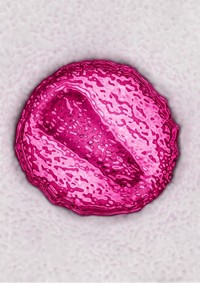Advertisement
Grab your lab coat. Let's get started
Welcome!
Welcome!
Create an account below to get 6 C&EN articles per month, receive newsletters and more - all free.
It seems this is your first time logging in online. Please enter the following information to continue.
As an ACS member you automatically get access to this site. All we need is few more details to create your reading experience.
Not you? Sign in with a different account.
Not you? Sign in with a different account.
ERROR 1
ERROR 1
ERROR 2
ERROR 2
ERROR 2
ERROR 2
ERROR 2
Password and Confirm password must match.
If you have an ACS member number, please enter it here so we can link this account to your membership. (optional)
ERROR 2
ACS values your privacy. By submitting your information, you are gaining access to C&EN and subscribing to our weekly newsletter. We use the information you provide to make your reading experience better, and we will never sell your data to third party members.
Infectious disease
Researchers use CAR-T to eliminate HIV in mice
The engineered cells overcome previous hurdles for the method by recognizing multiple HIV proteins and resisting infection
by Megha Satyanarayana
August 7, 2019
| A version of this story appeared in
Volume 97, Issue 32

Researchers have engineered T cells to kill HIV-infected cells in mice without the immune cells becoming infected themselves (Sci. Trans. Med. 2019, DOI: 10.1126/scitranslmed.aav5685).
These T cells represent a possible new therapy for HIV infection, says Judith Currier, a clinical researcher at the University of California, Los Angeles, who studies HIV treatment and who was not involved in the research. The cells appear to solve two significant hurdles the field has faced in their efforts to use chimeric antigen receptors, or CARs, to fight HIV.
The researchers, she says, accomplished this by designing the engineered cells so that they’re resistant to HIV infection and target more than one HIV epitope–the viral chunks that T cells recognize as prompts to attack. “These are the kind of steps we need to take to overcome the barriers that HIV is putting out.”
This treatment approach, called CAR T-cell (CAR-T) therapy, has shown tremendous success in treating circulating cancers in people. In this method, researchers and clinicians remove the T-cells from a person, engineer them with CARs that recognize molecules on the surface of cancer cells, and then infuse them back into the person they came from.
Several researchers have been trying to adapt this technology to treatHIV. The virus attacks a specific group of T cells that are potent immune fighters, and by engineering these cells to fight back a little harder, and a little smarter, the scientists hope that CAR-T could help people live without medication, and with very low viral loads. But it’s been challenging to figure out how to keep those engineered cells from getting infected themselves, says Boro Dropulic, the researcher at the biotechnology company Lentigen who led the project.
To get around these roadblocks, the research team built two CARs into the T cells, says Kim Anthony-Gonda, a Lentigen scientist who co-developed the CARs. The first antigen receptor recognizes HIV particles on the surface of an infected T cell. The second blocks HIV from infecting the CAR-T cell by blocking the ability of the virus to interact with receptors on the surface of the cell.
The team found that the T cells could produce both CARs and that having both meant better activity against HIV-infected cells in culture than just one. “The CAR-T cells were able to eliminate up to 99% or more of HIV infection in those cultures, and it was very broadly reactive against a number of strains found in Europe, Africa, and Asia, and also America,” Anthony-Gonda says. Immune cells produce cytokines, small proteins that stimulate immune cells to attack. High levels of cytokines were a problem for early CAR-T cancer therapies. But cytokine levels produced by the HIV CAR-Ts seemed low enough to prevent toxicity.
The researchers also tested their CAR-T cells in “humanized” mice. Mice typically don’t get HIV infections in the same way humans do, so scientists inject human white blood cells into the mice’s spleens to allow for more human-like infections.
After infecting these mice with HIV, the team infused CAR-T cells into the animals. The mice became virtually HIV-free, Anthony-Gonda says. Levels of T cells carrying CD4, a protein that HIV uses to infect its host, didn’t drop and neither did levels of the CAR-T cells, meaning that both the natural T cells and the engineered cells weren’t getting infected by HIV, she says.
“We don’t see any toxicity in the mice, and the mice don’t die from any of these infections,” Anthony-Gonda says.
The team is investigating human studies, Dropulic says, and hopes they will be able to start them in 2020. They will focus at first on people who are chronically infected with HIV, and who are on treatments that keep viral loads low, and T cells high.
Currier says it will be interesting to see what happens in these trials. She points out that HIV behaves differently in chronically infected people compared with people just infected, which the mice in the experiment represent. She expects that if this, or any CAR-T-based therapy for HIV takes off, it will need to be used in conjunction with other therapies, including ones being developed that will coax HIV out of the cells where it hides after it establishes infection.
“I think it’s going to take a combination of approaches,” Currier says, “with new drugs and new immune-based approaches. Proceeding in multiple different fronts is good to see.”
UPDATE
This story was updated on Aug. 8, 2019, to include Currier's affiliation.



Join the conversation
Contact the reporter
Submit a Letter to the Editor for publication
Engage with us on Twitter